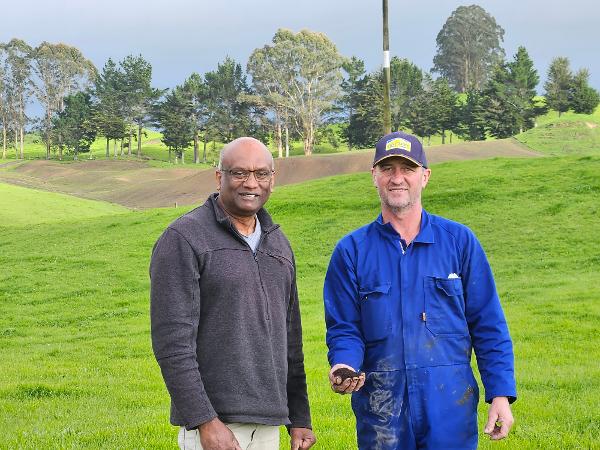Cutting Nitrate Leaching the Smart Way: Dr Gordon Rajendram's Carbon Strategy
As New Zealand’s pastoral sector grapples with ever tighter environmental thresholds around nitrate leaching, the science of soil carbon is emerging as a critical frontier. Dr Gordon Rajendram emphasises that rather than simply reducing nitrogen inputs, the key lies in redesigning the soil nitrogen cycle through enhanced carbon management. In grazed pastures, he notes, urine patches supply nitrogen at levels the plant microbe system cannot immediately assimilate, generating surplus nitrate vulnerable to leaching.
By incorporating carbon rich amendments such as humates and biochar, Dr Rajendram explains, farmers can shift nitrogen into more stable forms. Carbon inputs strengthen microbial immobilisation, essentially giving soil microbes something to feed on so that nitrogen stays bound in organic forms rather than rapidly converting to nitrate. The effect is twofold: less nitrate escapes into groundwater, and more nitrogen remains available for plant uptake, boosting productivity.
International research strongly supports this route. For instance, meta analysis work shows that biochar applications cut nitrous oxide emissions by around 54 percent on average. Lysimeter trials in New Zealand have gone further, recording reductions in nitrate leaching of 75 percent or more under ryegrass and clover systems when significant carbon amendments were applied. Dr Rajendram thus argues the challenge is not only finding the right products, but calibrating them for farm scale practicality: frequency, rate, and integration with grazing and fertiliser regimes.
He counsels farmers to view soil carbon amendments as part of a broader system change. For example, pairing humates at around 10 kg/ha with each fertiliser pass, currently being trialled by some Taupō area dairy farms, is one promising model. Over time the build up of stable carbon enhances the soil’s sink capacity for nitrogen, making the system more resilient under high stocking and fertiliser loads.
Dr Rajendram notes that this is just one effective strategy among several available to address nitrogen leaching. Different farm systems and soil types may require varied combinations of approaches, including changes to grazing management, fertiliser timing, and the introduction of cover crops or alternative pasture species.
For farmers facing regulatory constraints, this science based approach offers a pathway that is both sustainable and productive. As Dr Rajendram says: “We can trap more nitrogen in the soil where plants can use it, or let microbes convert it harmlessly to N₂, rather than losing it to waterways.” The shift, he insists, will require better measurement, smarter amendments and a willingness to think long term. The payoff? Lower environmental footprint and improved nutrient efficiency, a win for farm profitability and catchment health alike.
For more information and references, visit gordonrajendramsoilscientist.co.nz.
References
Manaaki Whenua – Landcare Research. Carbon inputs to reduce nitrogen losses from farms. Link
Qin, S. et al. Denitrification and DOC effects. ScienceDirect. Link
Lincoln University / Landcare Research archive. Increasing the available C supply from plant roots reduces nitrification potential in soils. Link
Contact Dr Gordon Rajendram
021 466 077 | rajendram@xtra.co.nz
www.gordonrajendramsoilscientist.co.nz
Contact MediaPA
027 458 7724
phillip@mediapa.co.nz


